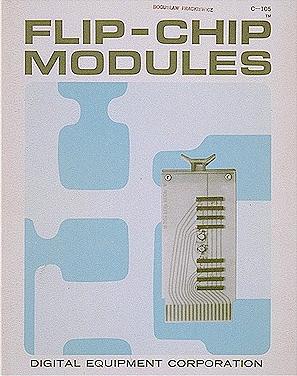 |
Flip Chip modules are developed.
Flip Chip modules were built of discrete transistors, diodes, resistors and capacitors. The series was designed so that backplanes could be wire-wrapped automatically, reducing costs and increasing production line throughput. Flip Chips became the basis for the PDP-8. |
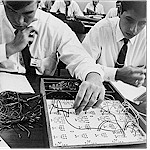 |
July:
The first European Customer Training Center opens in Reading, England. |
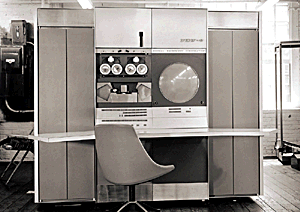 |
October:
Digital unveils its first 36-bit computer, the PDP-6.
Digital's first large computer, the PDP-6, was designed to be a powerful, timeshared machine oriented to scientific use. It was the first commercially available computer with manufacturer-provided software for general purpose applications. Ultimately, 26 PDP-6 systems were installed. |
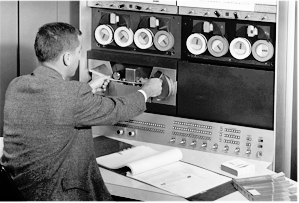 |
Tops 10 is developed as the major user software interface for Digital's 36-bit machines.
Tops 10 was developed from a 6-K word monitor for the PDP-6. It included user files and I/O device independence, a command control program and multiprocessing capabilities. Here an operator programs a PDP-6 using papertape. |
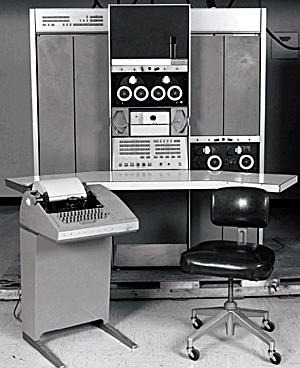 |
December:
The PDP-7, Digital's third 18-bit computer, is introduced.
A successor to the PDP-4, the PDP-7 used smaller, more conventional system units and was well received in laboratory and data acquisition applications. The machine featured DIGITAL's first mass-storage based operating system (DECsys for DECtape). Ultimately, 120 PDP-7s were produced and sold. |
 |
DECtape is introduced concurrent with the PDP-7.
DECtape was a random access, block addressable medium for storing information on small magnetic tape. For the first time, tape was divided into sectors so that it could be used as an I/O storage system that was both interactive and inexpensive. |
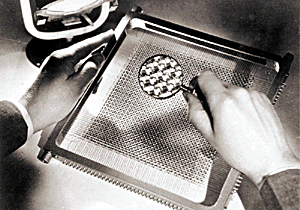 |
December:
DIGITAL is issued its first patent, for magnetic core memory. The inventors are Ken Olsen and Dick Best.
By 1971, Digital was the largest consumer of magnetic core memories other than IBM. Digital built its own magnetic core manufacturing business and by the mid-1970s was producing 30 billion magnetic cores per year. |



